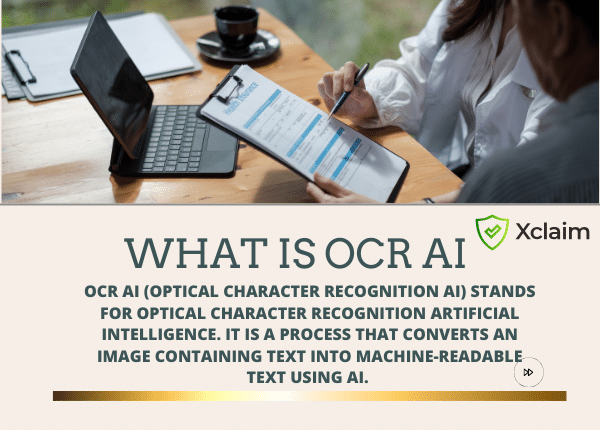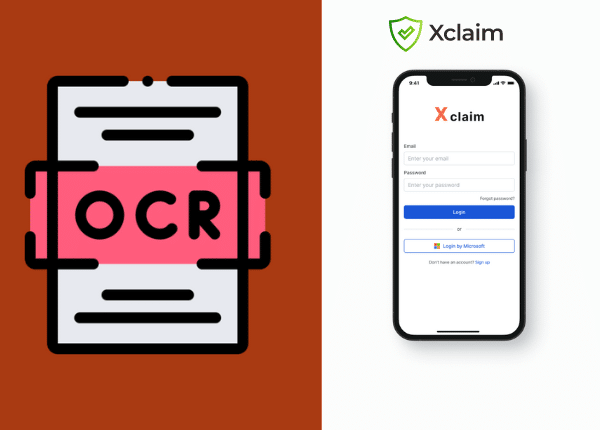Most business processes involve extracting information from printed media. Forms such as paper, invoices, scanned legal documents, and printed contracts are integral to business operations. Managing these voluminous documents requires significant time and space, prompting the integration of OCR AI technology. OCR AI addresses this issue by converting image text into machine-readable text that can be analyzed by business software. This data can then be used for analysis, optimizing operations, automating processes, and enhancing overall efficiency. So, what is OCR AI? Let’s explore this article by Innotech.
What is OCR AI?
OCR AI (Optical Character Recognition AI) stands for Optical Character Recognition Artificial Intelligence. It is a process that converts an image containing text into machine-readable text using AI.

For example, when scanning a form or receipt, your computer saves the scan as an image file. At this point, you cannot use a text editor to edit, search, or count words in the image file. However, OCR can convert the image into a text document with content stored as text data.
Significance of OCR AI in Document Processing
OCR AI technology significantly reduces paper consumption, mitigating the negative environmental impact of deforestation and excessive waste in landfills. Many businesses still use print media for documents such as invoices, contracts, legal papers, and more. However, in today’s digital world, paperless businesses are on the rise. OCR AI facilitates the transition by converting images into text, enabling businesses to save time and money. Automated document processing with OCR software streamlines workflows, reduces manual data entry errors, and increases productivity.
Challenges in Data Processing
To make informed business decisions, organizations need access to vast amounts of data stored in structured and unstructured formats. Structured data, organized in specific formats like SQL databases, Excel files, and SEO tags, is easily searchable. However, about 80-90% of available data is unstructured, coming from sources like images, emails, PDFs, and documents. Smart data processing helps extract valuable information from unstructured formats, especially documents.
Understanding Intelligent Document Processing (IDP)
Intelligent Document Processing (IDP) combines Natural Language Processing (NLP), computer vision, and machine learning to automate document-based workflows. IDP leverages advancements in artificial intelligence to extract meaningful data, transforming it into structured data. This makes it more understandable and easily integrable into systems and operational processes.
IDP is a powerful technology for organizations to process large volumes of unstructured data in documents, improving operational efficiency and gaining new insights. It is widely used in healthcare, finance, insurance, and legal services to automate manual processes such as invoice processing, complaint handling, and contract management.
Challenges of Intelligent Document Processing
Despite its ability to streamline and automate document-heavy business processes, IDP faces challenges. Poor image quality and handwritten text in documents pose difficulties for accurate information extraction. Handling different document types, each with its layout, format, and structure, is another challenge. Multilingual users may create language barriers for IDP systems, requiring the ability to process documents in multiple languages. Additionally, IDP needs to understand the context in which a document is written to accurately interpret its meaning, posing challenges in leveraging advanced natural language processing.
Understanding OCR AI
OCR is a crucial technology that allows computers to recognize and convert text and characters from scanned documents into editable and searchable data. It automates document processing and minimizes reliance on manual labor.
Role of Artificial Intelligence in Enhancing OCR Capabilities
Artificial Intelligence plays a vital role in enhancing the capabilities of OCR. By utilizing machine learning models and intelligent algorithms, AI improves the accuracy of text recognition and information extraction from images. This not only enhances performance but also reduces errors in the process.
OCR AI goes beyond converting images into text. It offers essential features to optimize document processing, including text search capabilities, error reduction in manual data entry, seamless integration with existing systems, and flexible scalability to meet evolving business needs.
Impact of OCR AI on Document Processing
The integration of OCR AI significantly improves the accuracy of text recognition. The ability to understand and process text from images is optimized using Artificial Intelligence, ensuring precise and reliable recognition results.
Improved Speed and Efficiency
OCR AI positively impacts the speed and efficiency of document processing. Automation and integration with Artificial Intelligence reduce processing time, enhancing the overall performance and flexibility of business processes.
Reduction of Human Errors in Data Extraction
A significant impact of OCR AI is the reduction of human errors in the data extraction process. Automating this process eliminates common mistakes, ensuring that documents remain accurate and reliable.
Advancements in Accessibility and Inclusivity
OCR AI not only enhances document processing but also has a substantial impact on accessibility. Converting text from images improves accessibility, making it easier for everyone to use data without visual limitations.
Xclaim – A Breakthrough Product with OCR AI Technology
Xclaim is a groundbreaking solution that integrates OCR AI technology, offering an efficient and modern approach to document management and filling out insurance forms. Built on the Optical Character Recognition (OCR) and Artificial Intelligence (AI) technology platform, Xclaim is more than just a document scanning tool. It is a reliable partner in information processing.

With the ability to automatically recognize and extract data from images, Xclaim minimizes the time and effort users need for manual data entry. In insurance document scanning and form-filling features, Xclaim is a powerful tool that enhances data accuracy and performance while reducing the potential for errors from manual input. This not only saves time but also ensures the accuracy and reliability of crucial data during insurance document processing.
Xclaim is not just a document scanning tool; it represents a significant step forward, providing efficiency and convenience in information management and form filling. It helps businesses save costs and optimize workflow processes.
Soon, we can expect further developments and widespread integration of OCR AI in various fields. New technologies and continuous improvements will reshape how we handle information and documents, offering ongoing benefits for businesses and individuals alike.
Contact us for more information about OCR AI


